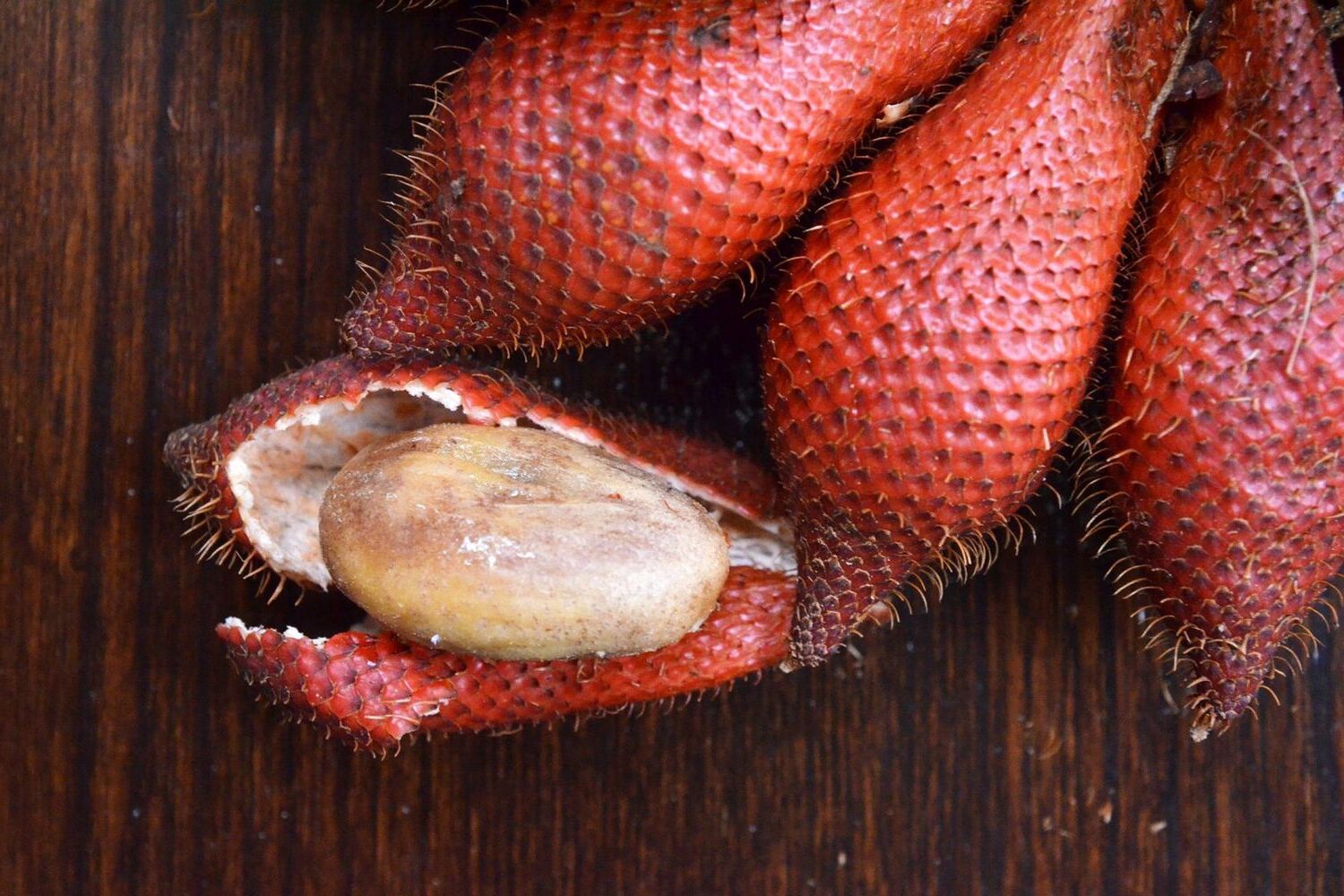
Salak, also known as snake fruit, is a tropical fruit native to Indonesia. Its reddish-brown scaly skin resembles a snake, hence the name. But what makes this fruit so special? Salak is not only unique in appearance but also packed with nutrients. It offers a crunchy texture and a sweet, tangy flavor that can surprise your taste buds. Rich in vitamins, minerals, and antioxidants, salak can boost your health in various ways. Whether you're a fruit enthusiast or just curious about exotic foods, learning about salak can be both fun and informative. Ready to dive into some intriguing facts about this fascinating fruit? Let's get started!
Key Takeaways:
- Salak, also known as snake fruit, is a tropical fruit from Indonesia with a scaly skin resembling snake scales. It's rich in Vitamin C, fiber, and antioxidants, making it great for the immune system and heart health.
- Salak isn't just a fruit; it's a cultural icon in Indonesia. It's used in traditional medicine, given as gifts, and has made its way into international markets as a sought-after exotic fruit in gourmet cuisine.
What is Salak?
Salak, also known as snake fruit, is a tropical fruit native to Indonesia. Its unique appearance and taste make it a fascinating subject. Let's dive into some intriguing facts about this exotic fruit.
-
Salak gets its nickname "snake fruit" due to its reddish-brown scaly skin, which resembles snake scales.
-
The fruit grows on a species of palm tree called Salacca zalacca, which is native to Java and Sumatra in Indonesia.
-
Salak is typically about the size of a fig, with a pointed tip and a slightly rough texture.
-
The flesh inside is usually white or yellowish and divided into three lobes, each containing a large, inedible seed.
Nutritional Benefits of Salak
Salak isn't just interesting to look at; it also packs a nutritional punch. Here are some health benefits you might not know about.
-
Rich in Vitamin C, salak helps boost the immune system and promotes healthy skin.
-
The fruit contains high levels of dietary fiber, aiding digestion and preventing constipation.
-
Salak is a good source of potassium, which is essential for heart health and maintaining proper muscle function.
-
It also contains antioxidants that help fight free radicals, reducing the risk of chronic diseases.
Culinary Uses of Salak
Salak isn't just eaten raw; it has various culinary applications. Here are some ways this fruit is used in cooking.
-
In Indonesia, salak is often pickled and served as a tangy snack.
-
The fruit can be used in salads, adding a unique crunch and flavor.
-
Salak is sometimes cooked into syrups or jams, providing a sweet and exotic taste.
-
It can also be dried and eaten as a chewy, nutritious snack.
Growing and Harvesting Salak
Growing salak requires specific conditions, making its cultivation an interesting process. Here are some facts about how this fruit is grown and harvested.
-
Salak palms thrive in tropical climates with high humidity and well-drained soil.
-
The trees are usually grown in clusters, as they require cross-pollination to produce fruit.
-
Harvesting salak is a labor-intensive process, as the fruit must be carefully picked to avoid damaging the delicate skin.
-
The trees can produce fruit year-round, but the peak season is typically during the rainy months.
Cultural Significance of Salak
Salak holds a special place in the cultures where it is grown. Here are some cultural aspects related to this unique fruit.
-
In Indonesia, salak is often given as a gift during special occasions and celebrations.
-
The fruit is sometimes used in traditional medicine to treat various ailments, such as diarrhea and indigestion.
-
Salak has also made its way into local folklore and stories, often symbolizing resilience and adaptability.
-
In recent years, salak has gained popularity in international markets, becoming a sought-after exotic fruit in gourmet cuisine.
Salak is more than just a fruit; it's a cultural icon, a nutritional powerhouse, and a culinary delight. Whether you're munching on it raw or incorporating it into a dish, salak offers a unique experience that's hard to forget.
Salak: A Fruit Full of Surprises
Salak, or snake fruit, isn't just unique in appearance. Its nutritional benefits make it a standout. Rich in vitamin C, fiber, and antioxidants, this fruit supports immune health, digestion, and skin vitality. The crunchy texture and sweet-tart flavor offer a delightful eating experience. Beyond its taste, salak's cultural significance in Southeast Asia adds to its charm. Used in traditional medicine and culinary dishes, it's a versatile ingredient. Whether you're a food enthusiast or someone curious about exotic fruits, salak is worth a try. Next time you're at an Asian market, grab some salak and enjoy its unique qualities. This fruit truly embodies the saying, "Don't judge a book by its cover." Dive into the world of salak and discover its hidden treasures.
Frequently Asked Questions
Was this page helpful?
Our commitment to delivering trustworthy and engaging content is at the heart of what we do. Each fact on our site is contributed by real users like you, bringing a wealth of diverse insights and information. To ensure the highest standards of accuracy and reliability, our dedicated editors meticulously review each submission. This process guarantees that the facts we share are not only fascinating but also credible. Trust in our commitment to quality and authenticity as you explore and learn with us.


